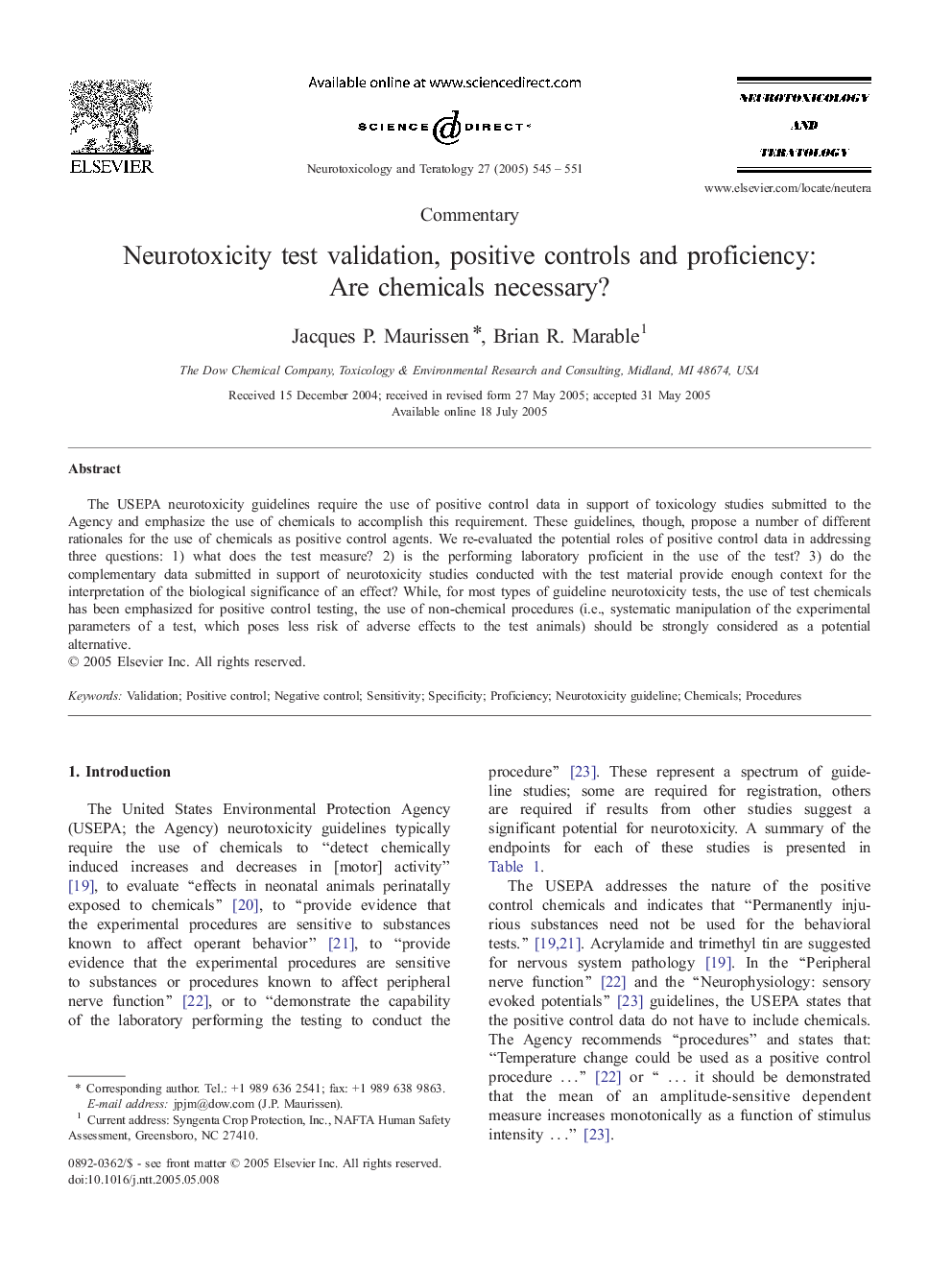| Article ID | Journal | Published Year | Pages | File Type |
|---|---|---|---|---|
| 9033236 | Neurotoxicology and Teratology | 2005 | 7 Pages |
Abstract
The USEPA neurotoxicity guidelines require the use of positive control data in support of toxicology studies submitted to the Agency and emphasize the use of chemicals to accomplish this requirement. These guidelines, though, propose a number of different rationales for the use of chemicals as positive control agents. We re-evaluated the potential roles of positive control data in addressing three questions: 1) what does the test measure? 2) is the performing laboratory proficient in the use of the test? 3) do the complementary data submitted in support of neurotoxicity studies conducted with the test material provide enough context for the interpretation of the biological significance of an effect? While, for most types of guideline neurotoxicity tests, the use of test chemicals has been emphasized for positive control testing, the use of non-chemical procedures (i.e., systematic manipulation of the experimental parameters of a test, which poses less risk of adverse effects to the test animals) should be strongly considered as a potential alternative.
Keywords
Related Topics
Life Sciences
Environmental Science
Health, Toxicology and Mutagenesis
Authors
Jacques P. Maurissen, Brian R. Marable,
